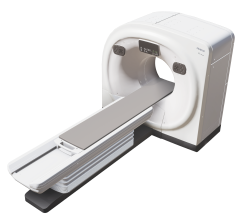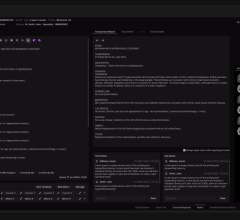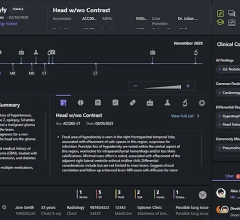
October 30, 2014 — Visage Imaging Inc. announced the latest release of the Visage 7 Enterprise Imaging Platform, offering substantial enhancements in scalability, clinical features, integration, workflow and quality assurance capabilities. With this new release, Visage 7 has further extended its support for large-scale enterprise imaging volumes with a technology-forward architecture. Visage 7 enables enterprise imaging with fast, thin-client, server-side processing technology, as well as simple mobile access to imaging results via Visage Ease.
Visage 7.1.6 further optimizes how incoming studies are processed by Visage 7, to now support tens of millions of annual studies, accommodating even the world’s largest healthcare organizations. Unlike legacy approaches that are limited servicing large institutions with isolated clusters of picture archive and communications system (PACS) servers, Visage 7 offers customers the choice of centralized, distributed or hybrid deployment solutions, regardless of the size of the institution, all without performance degradation. Given the current state of the U.S. healthcare system, health system consolidation is anticipated to continue for the foreseeable future with 87 percent of institutions considering alignment as part of their strategic plans. Until now, these consolidated systems have been forced to manage multiple heterogenous PACS environments at significant expense and severe limitations to patient care. With Visage 7, these massive organizations can be served with a single multi-dimensional viewer for all users.
Visage 7 now offers many new features and enhancements, including the following spotlighted capabilities:
- Multi-tabbed Epic EHR integration. A single point of imaging access for interpreting radiologists and referring physicians, Visage 7 is launched via an intelligent API to the Epic EHR (electronic health record). Visage 7 supports concurrent tabbed sessions, with tight bi-directional integration to the Epic EHR and secure single sign-on for internal and external users.
- Breast imaging. Digital mammography studies are now displayed with automated vertical chest wall alignment. Interpretation workflow has also been enhanced with new overview workup and current/prior stack-scrolling layouts.
- Study loading. Visage 7 has introduced a new workflow and usability feature beneficial for interpretation of cases with dozens of prior studies, and particularly cases with multiple relevant prior studies. In addition to automatically displaying the most recent relevant priors across the display real estate based on Auto-Prior Rules, Visage 7 now allows users to automatically load additional historical relevant priors into the viewer, but not hang them in the viewports. If the radiologist wishes to view additional priors deemed relevant for the interpretation without any delay they can immediately drag-and-drop the stud(ies) from the series image thumbnail browser into the active viewports. Another simple drag-and-drop from the thumbnail browser will return the original prior to the active viewports.
- Display protocols and layouts. In addition to supporting display protocols and layouts that are applied across the entire display real estate, studies may now be flexibly viewed in Visage 7 with individual protocols and layouts per display. This functionality allows maximum flexibility and modality hanging specificity, particularly for viewing sophisticated multimodality and comparison presentations.
For more information: www.visageimaging.com


 February 03, 2025
February 03, 2025 








